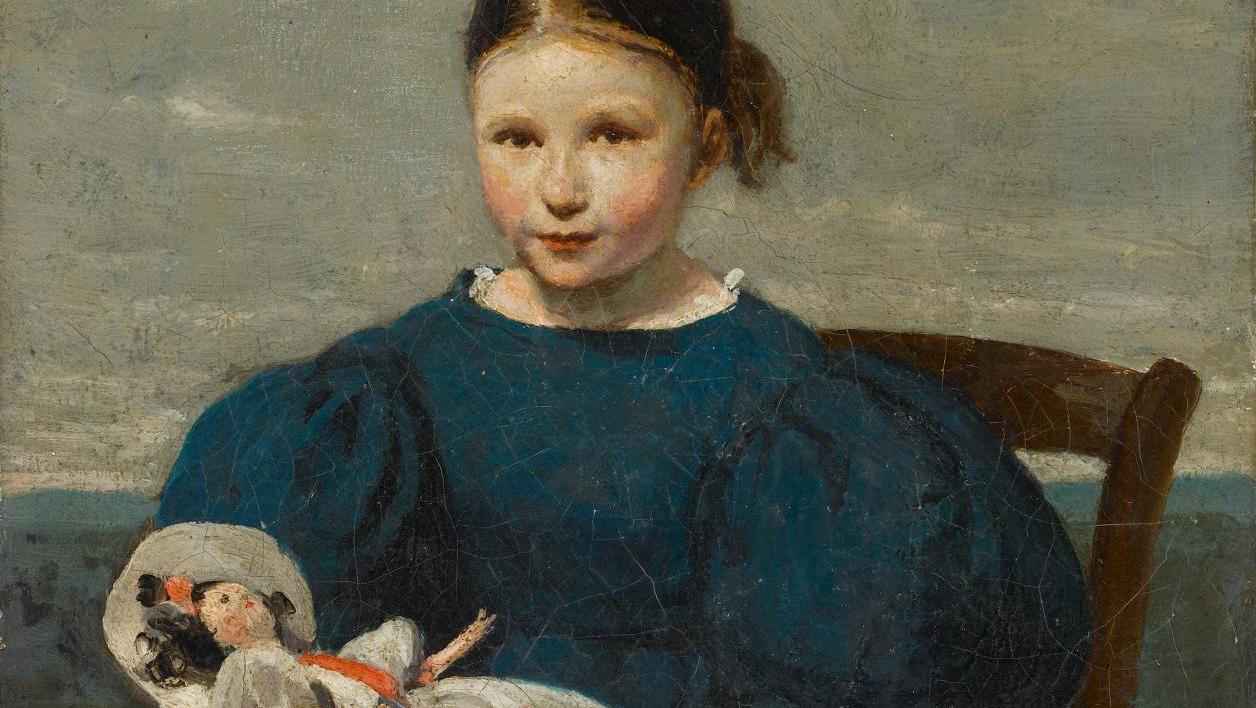He returned from Italy with vistas of Rome, Florence and Tivoli, but he also tirelessly roamed the French countryside, setting up his easel from Normandy and Morvan to Provence. Haloed in silver and golden light, these bucolic landscapes, much admired by Delacroix and Baudelaire, earned him a fine reputation and a title...
“Petite fille à la poupée” (1830-35, oil on canvas) was recently authenticated by Martin Dieterle and Claire Lebeau and included in the 6th supplement to the artist’s catalogue raisonné.
Courtesy Sotheby’s, inc. © 2012
He returned from Italy with vistas of Rome, Florence and Tivoli, but he also tirelessly roamed the French countryside, setting up his easel from Normandy and Morvan to Provence. Haloed in silver and golden light, these bucolic landscapes, much admired by Delacroix and Baudelaire, earned him a fine reputation and a title as a “forerunner to Impressionism”. But the exhibition devoted to him at the Musée Marmottan Monet, Paris, reminds us that Corot was also a remarkable figure painter, whose intimist depictions embraced his close circle and essentially fictitious peasant girls, monks and children. This facet is less well-known, because, as we learn from Sébastien Allard (director of the Paintings department at the Louvre and curator of the exhibition), “He did not want to show them at the salons. Most of them remained in his studio, and only came to light after he died.” Degas considered these the best part of his work, with a bold touch that would later inspire Braque, Derain, and Picasso. “The last classical and first modern painter,” Jean-Baptiste…
com.dsi.gazette.Article : 4874
This article is for subscribers only
You still have 85% left to read.
